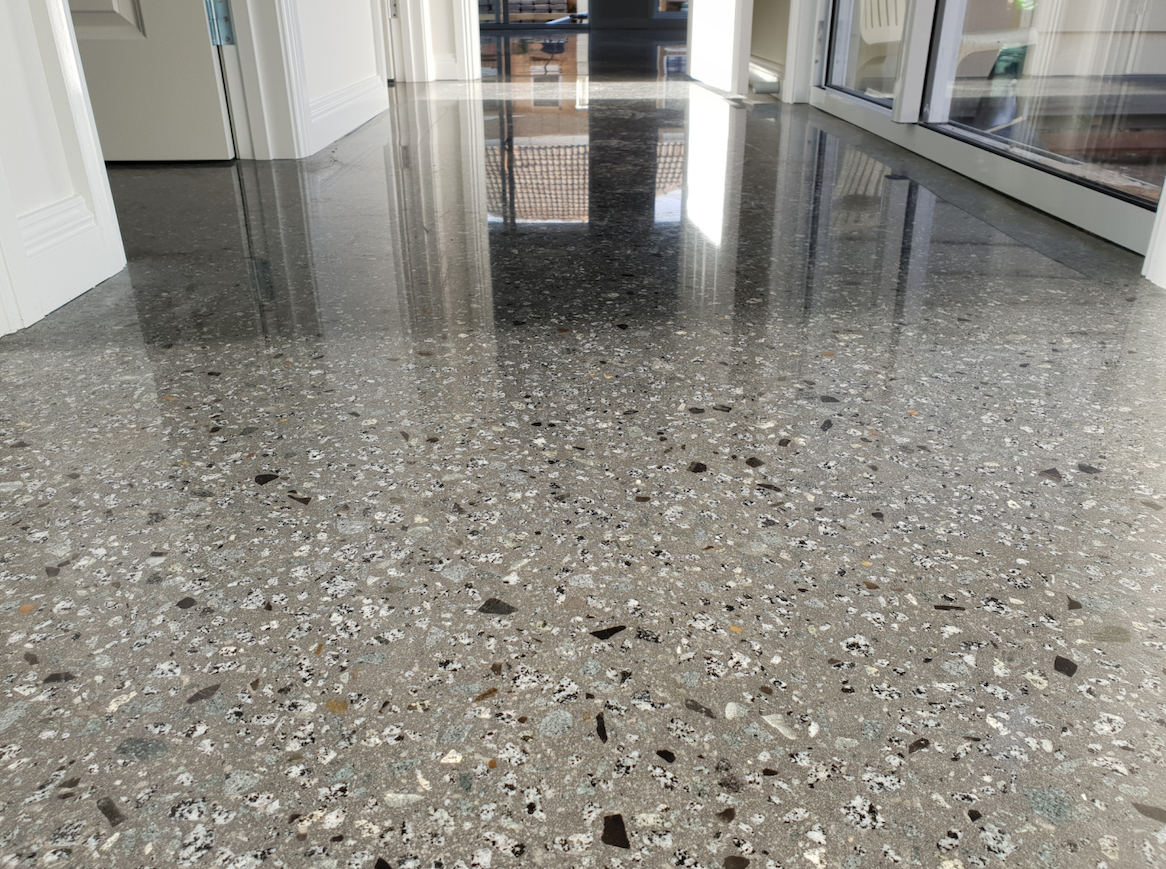Polished Concrete Types | Tips Before Buying Commercial Floor Scrubber

Have you been to a department store and looked down to see how the floor looks? Aesthetic, attractive, and modern, right? Well, that is the work of polished concrete!

Industries estimate about 15-20% (read more) polished concrete get installed each year. It would likely continue to rise for many years as many structures (homes, malls, etc.) evolve in various styles! Are you planning to take part in the trend when designing your home, shop, garage, or office? Well, there are many things you must consider first. Like the design of the floor, materials used, the method of polishing, and maintaining the finish.
One way to maintain the shine of your floor is by scrubbing them. While polishing the base of the house is easy, what about the shops or offices? Surely it would be time-consuming and requires effort. Luckily, there are commercial scrubbers to help polish your floors easier and faster.
In this article, we will tackle basic information about polished concrete, the two major types, and their benefits and disadvantages. I would also include a list of 4 tips before buying floor scrubbers.
What Is Polished Concrete?
It is a multi-step procedure where the concrete floor is ground, honed, and polished to achieve the desired design. Abrasives are used to cut parts of the surface floor. It is then refined with each cut to finish a specific appearance. The project depends on the owner’s preferences.
Grind And Seal
This procedure starts by grinding the top of the slab to show fewer or more stones or aggregates. The exposure of the rocks can be nil, minimum random, and fully exposed. Nil level has no stones exposed, minimum random shows some rocks at different places, and fully exposed stones are visible across the slab.
After the level of stones exposed is achieved, fine diamonds are used to remove any scratches, unwanted bumps and to get a flat surface. The slab can be dyed with different colors at this point and/or grout to make it appear a more glass-like and smoother surface. Do not that grouting the floor will cost you an additional amount.
The choice of grouting the slab is dependent on the designer (you) for nil and minimum random stone exposure. However, at a fully exposed stone design, it is always required to grout the floor. Sealing is the final step of the procedure!
Coatings and sealers are used to encase the appearance of the slab, maintaining, and protecting its aesthetic look. The sealers can be matte, semi-gloss, and high-gloss. You can also include additives in the formula like slip-reducers, pigments, tints, and contrasts.
It Is Great For:
- Indoors at home
- Offices
- Shops
- Bars; and
- Garage
Benefits
- It is more cost-effective
- Durable
- Less slippery
- Water and stain-resistant
Disadvantages
- Required to reapply coat every 3 to 10 years depending on the materials used.
- Costs more in maintenance because of the recoating.
Mechanically Polished Concrete (MPC)
This procedure starts similarly to the grind and seal method. Again, the top or surface of the slab is grounded to expose more or fewer stones. This method cuts back to eliminate imperfections on the materials, followed by refining with diamonds for a flatter surface. Concrete substrates to the floor such as grout, hardeners, polymers, and water-proofing retardants added to the base.
It is then under numerous procedures to densify and harden the floor before polishing it. The base is polished with a mechanical scrubber multiple times to achieve the level of shine. Many companies like www.concretefloorrestorations.com.au offer different flooring types like matte, satin, semi-gloss, and high-gloss at various levels of stone exposure. They add special concrete polishing pads to remove any scratches and excess grout on the finish.
It Is Great For:
- Indoors
- High-end office
- Shops
- Large spaces like department stores
Benefits
- Upkeep is minimal
- Improved light reflectivity
- Highly resistant to staining
- Timeless appearance
- Easy maintenance; and
- More slip-resistant
Disadvantage
- Loud
- Susceptible to moist if done incorrectly
Four Tips Before Buying A Commercial Floor Scrubber
1. Assess The Parameters
The first and essential step before choosing your scrubber is to look at the parameters of the place. Is it a small and closed area, or a wide and open one? In addition to that, check the cleanable areas. Through assessing, it would indicate what size of scrubber you would buy.
2. Ergonomic-Friendly
Scrubbing the floor is a chore- it is tiring and stressful. Machines that offer comfort for the user are always a must-have. It can save you from a lot of back pain caused by bending and improper body mechanics. Additionally, you could work much faster than your average Joe. This tip also applies to those heavy-duty automobile scrubbers to polish wide-open areas.
3. The Dirt You Deal
No, the title for this one is not an idiom- I am talking about the types of dirt you are going to deal with! You should avoid using a scrubber when dealing with solid debris and dirt. However, in places such as warehouses, it is almost impossible to avoid them. Luckily, many floor scrubbers can help deal with it. So when you identify the area you want to scrub, you have to know what kind of dirt you are removing.
4. Battery And Charger
Commercial scrubbers nowadays are battery-powered. The wire from old-fashioned scrubbers is a hassle to work with and could hinder you from polishing the floor. With that said, it is essential to check how long the battery would last. Low battery life would be a liability than an asset- it would cost you some cash to change batteries.
Chargers are equally essential- it is the only way to replenish battery life after all. Be sure to charge the battery no more than the recommended hours of charging. When the battery drained empty, and no amount of charging could help, remember to buy the same battery type to avoid any incidents!








